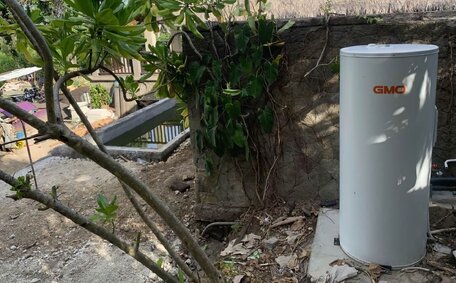
Financial Benefits of Natural Gas
Natural gas offers many financial perks over other energy sources. It burns cleaner and costs less than alternatives, helping lower monthly bills.
Read MoreHaving hot water available at all times is an essential part of modern living. At some point, you may find yourself needing or wanting to relocate your hot water system. Knowing what’s involved in moving a hot water system allows you to be prepared and make the process go smoothly.
Relocating a hot water system requires careful planning and consideration. The logistics of moving the unit, as well as safely disconnecting, preparing a new location, and reconnecting must be taken into account. There are also permits, inspections and other requirements to factor in when moving gas or electric hot water heaters.
Water heaters are essential appliance in every home, so having the right information ensures your hot water system gets moved safely and efficiently. By understanding the steps involved and working with professional plumbers, especially for gas heaters, relocating your hot water system can be a straightforward endeavour.
When relocating a hot water system, safety should always be the top priority. Proper planning and precautions are necessary to prevent accidents and injuries.
One of the most important safety considerations is getting the gas or electricity supply turned off and disconnected by a professional prior to moving a hot water system. Attempting to move a still-connected water heater poses electrocution and fire risks.
It’s also essential to completely drain the water tank before relocation. Water heaters can weigh several hundred pounds when full, making them unwieldy and prone to damage or leaks during transport.
Safe lifting techniques like having multiple people share the load, using dollies and avoiding twisting should be used when moving the unit. Wearing protective equipment like gloves and eye protection is also recommended.
Carefully checking for any loose connectors or broken parts afterwards is advised to spot potential gas or water leaks early. Having a professional plumber inspect everything after installation is highly recommended.
Gas hot water systems in particular should only be moved by licenced professionals as reconnecting the gas line improperly can lead to serious explosions and fire hazards.
Relocating a water heater requires skilled hands and experience. So while relocating your hot water system yourself may be possible, it’s often best to hire a professional plumber service.
When relocating a hot water system, one of the most important considerations is choosing an appropriate new location. The right location will ensure optimal performance and accessibility.
Some key factors to think about when picking a spot include:
Typical locations for hot water systems within homes are:
Outdoor areas are another option, especially for tankless heaters which are compact and weather-resistant. These can go on patios, against external walls, or on concrete slabs.
Tankless water heaters can be placed almost anywhere with access to power, gas, water lines and drainage. This makes finding a suitable new home for your hot water system a relatively straightforward process.
p>Preparing the space for your relocated hot water system is an important step that helps ensure proper installation and operation. Here are some tips on getting the new location ready:
Once you’ve selected the new location and prepared the space, follow these key steps to safely relocate your hot water system:
With some planning and care taken at each step, relocating a hot water system can be manageable. But due to the gas lines and complexity, it’s best left to licenced plumbers.
p>p>p>p>p>p>p>p>p>p>p>p>p>p>
When relocating a hot water system in Australia, there are certain permits and regulations to be aware of. Compliance is crucial for safety and to avoid problems down the line.
Any significant plumbing changes to your home generally require approval from your local council. Moving a hot water unit’s location and rerouting pipes qualifies as significant modifications.
For gas hot water systems, a licenced plumber must obtain a gas work permit before disconnecting or reconnecting gas lines. There are strict rules around gas work to prevent leaks and explosions.
With electric hot water systems, you may need permits for any new electrical wiring required at the new location. A licenced electrician should perform this work.
Your local council can provide all the specifics on required permits and inspections. As experienced plumbers, Balmain Plumbing stays up-to-date on the latest regulations to ensure full compliance when moving hot water systems for clients.
Adhering to all the rules and using qualified tradespeople keep your new system installation safe. It also prevents any issues when selling your home down the track.
Relocating a hot water system is a project that requires careful planning and consideration. With the right preparations, it can be managed successfully as a DIY endeavour. However, working with gas lines introduces risks and complexities best left to professional plumbers.
For anyone looking to move their hot water system in the Balmain area, the experienced team at Balmain Plumbing can assist. For anyone looking to move their hot water system in the Balmain area, the experienced team at Balmain Plumbing can assist.
They stay up-to-date on all permits and regulations to ensure a smooth, fully compliant installation.
To enquire about relocating your hot water system with Balmain Plumbing’s assistance, feel free to email, call or book an appointment online today.
Natural gas offers many financial perks over other energy sources. It burns cleaner and costs less than alternatives, helping lower monthly bills.
Read MoreChoosing the correct hot water system size involves considering factors like number of household members, number of bathrooms, peak usage times and daily hot water needs per person. Our guide helps determine the right system capacity.
Read MoreHaving trouble with your gas water heater not heating properly? The pilot light may have gone out. Follow our clear guide on relighting your gas water heater’s pilot light in 6 easy steps. Or call the friendly experts at Balmain Plumbing if you need assistance relighting your pilot.
Read MoreBalmain, 2041 NSW
We will call back as soon as possible.




